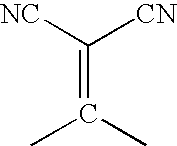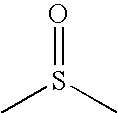Compositions and methods for treating atherosclerosis
a technology of atherosclerosis and compositions, applied in the field of isolated peptides, can solve the problems of increased economic burden of coronary heart, heart attacks and angina, and the aftermath of a coronary heart disease event, and achieve the effects of potentiating the mobilization and release of cholesterol, reducing the risk of heart attack, and inhibiting the storage of cholesterol
- Summary
- Abstract
- Description
- Claims
- Application Information
AI Technical Summary
Benefits of technology
Problems solved by technology
Method used
Image
Examples
example 1
Animals
[0146] Swiss-white CD1 6-8 week old female mice were obtained from Charles River, Montreal, Quebec. Mice were kept in a temperature controlled room on a 12 hour light / dark cycle. They were fed with Purina Lab Chow pellets and water ad libitum.
[0147] ApoE knockout mice were obtained from Jackson Laboratories, Maine, U.S.A.
example 2
Chemicals
[0148] All chemicals were reagent grade and purchased from Fisher Scientific (Nepean, Ont.), Sigma (St. Louis, Mo.), ICN (Aurora, Ohio), or BioRad (Hercules, Calif.). Dulbecco's Modified Eagle Medium (DMEM) and fetal bovine serum (FBS) were purchased from Life Technologies (Burlington, Ont.). Radiolabeled [1-14C]-oleic acid (52 mCi / mmol), [1,2,6,7-3H(N)]-cholesterol (82 Ci / mmol), and cholesteryl-1,2,6,7-3H(N)]-oleate (84 Ci / mmol) were obtained from DuPont NEN (Boston, Mass.).
example 3
Peptides
[0149] The following peptides were synthesized by solid-phase chemistry:
GFFSFVHEAFQGAGDMWRAY(SEQ ID NO:1)TDMKEANWKNSDKYFHARGNYDAAQRGPGG(SEQ ID NO:2)VWAAEKISDGREAFQEFFGRGHEDTIADQE(SEQ ID NO:3)DTIADQEANRHGRSGKDPNYYRPPGLPDKY(SEQ ID NO:4)GFFSFIGEAFQGAGDMWRAY(SEQ ID NO:5)RSFFSFLGEAFDGARDMWRAYSD(SEQ ID NO:6)RGFFSFIGEAFQGAGDMWRAY(SEQ ID NO:7)ADQEANRHGRSGKDPNYYRPPGLPDKY(SEQ ID NO:8)ADQEANRHGRSGKDPNYYRPPGLPAKY(SEQ ID NO:9)ADQAANKWGRSGRDPNHFR(SEQ ID NO:11)ADQAANEWGRSGKDPNHFR(SEQ ID NO:12)
[0150] Synthetic peptides corresponding to amino acid residues 1-20 (20-mer) (SEQ ID NO 30) and 78-96 (19-mer) (SEQ ID NO: 12) of the human SAA1.1 protein sequence, respectively, were also synthesized by Polypeptide Laboratories (PPL; Torrance Calif.). The 19-mer denoted as PPL4 in FIG. 14, enhances CEH activity and has the following sequence: ADQAANNEWGRSGKDPNHFR (SEQ ID NO:12) corresponding to amino acids 78-96 of human SAA1.1 or human SAA 2.1 (molecular mass of 2156.3 daltons). The 20-mer denote...
PUM
| Property | Measurement | Unit |
|---|---|---|
| concentration | aaaaa | aaaaa |
| output power | aaaaa | aaaaa |
| operating pressure | aaaaa | aaaaa |
Abstract
Description
Claims
Application Information
 Login to View More
Login to View More - R&D
- Intellectual Property
- Life Sciences
- Materials
- Tech Scout
- Unparalleled Data Quality
- Higher Quality Content
- 60% Fewer Hallucinations
Browse by: Latest US Patents, China's latest patents, Technical Efficacy Thesaurus, Application Domain, Technology Topic, Popular Technical Reports.
© 2025 PatSnap. All rights reserved.Legal|Privacy policy|Modern Slavery Act Transparency Statement|Sitemap|About US| Contact US: help@patsnap.com



